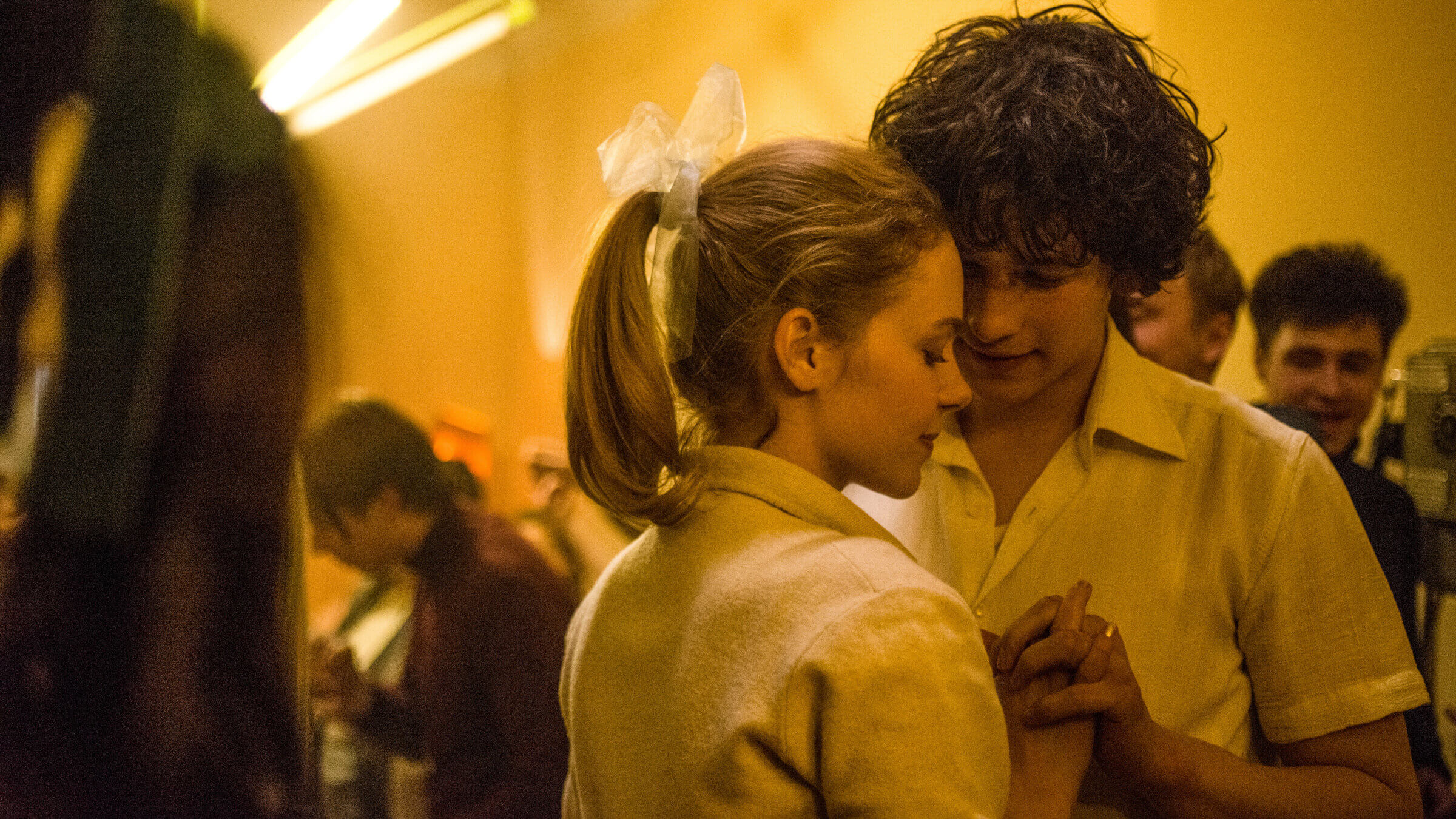How a would-be revolution led to an exodus of Polish Jews
History cuts a love story short in a film about the student uprisings that rocked Poland in 1968

Vanessa Aleksander as Hania and Ignacy Liss as Janek in March ’68. Courtesy of Menemsha Films
Three men’s shirts, a crystal vase, some books.
These are some of the meager personal possessions which Hania and her family want to take with them as they leave Poland for Israel. For this service, they must bribe the police officers inspecting their luggage. The bottle of liquor and pile of cash Hania’s mother places pragmatically on the table secure most of their stuff. When it comes to objects of artistic rather than monetary value, however, the officer proves implacable. Hania has to leave behind a prized copy of Forefather’s Eve, a play by the revered Polish poet Adam Mickiewicz; her father surrenders a sketch of his hometown.
This degrading episode occurs at the end of Krzysztof Lang’s March ’68. But it feels like the centerpiece of a film that, while couched as a story of star-crossed lovers, is really about the power of art to inspire political courage — and its futility in effecting real political change. Running this week at the New York Jewish Film Festival, March ’68 chronicles the largely unsuccessful student uprisings that rocked Poland in 1968 and led to an antisemitic campaign against the country’s tiny Jewish population. Insignificant as they seem, the play and the sketch represent Hania and her father’s identification as Poles, not to mention the fortitude required to maintain that identity in a country that has repeatedly indicated they are not welcome. As much personal solace as these objects provide, they can purchase no safety or belonging for their owners.
The film’s story begins just a few months earlier, in the midst of a gray-toned yet benign Eastern Bloc winter, when aspiring thespian Hania (Vanessa Aleksander) meets technology student Janek (Ignacy Liss) at a production of Forefather’s Eve. (Lang, who would have been about Janek’s age in 1968, also studied chemistry at the University of Warsaw.) Hania is half Jewish; her father Jerzy, a surgeon who survived the Warsaw Ghetto, has recently been fired over a false allegation that he organized a “drinking binge” after Israel’s victory in the 1967 war. Janek’s father is an ambitious apparatchik with midcentury modern furnishings and French cognac to demonstrate his place on the party ladder. He might not have denounced Jerzy himself, but his job is to organize the denouncers.
To Hania and Janek, these family differences mean nothing — until they join in the idealistic demonstrations of the film’s titular month and year.
Catalyzed in real life as in the film by a government ban on Forefather’s Eve, those protests were part of the dissent movement against Soviet satellite regimes, notably the Prague Spring in nearby Czechoslovakia. To derail the demonstrations, the government declared them the work of “Zionist” infiltrators. Poland’s leaders would go on to purge Polish Jews from positions in government and public service, and to expel at least 13,000 from the country. Among them is Hania’s (fictional) family.
March ’68 is one of few depictions of this historical moment to reach the American market. But we learn about the protests only gradually, since the film fritters away much of its time on the fairly textbook logistics of Hania and Janek’s love affair. The first of its two hours is devoted to lingering glances, besotted photography sprees, and the sensual exchange of contraband western publications. A viewer with any knowledge of the events of 1968 can see that this relationship is doomed, which makes the lovers’ obliviousness seem less like bliss and more like plain old ignorance. The orchestrated backlash against Jews and the humiliations heaped on families like Hania’s are crammed into the film’s second half, with neighbors cropping up to make antisemitic remarks and explain the restrictions placed on emigrants by the Polish government.
The film is far more compelling in its exploration of the way art sparks and then fails this would-be revolution. At a time of many different repressions, it takes an affront on an 18th-century writer to get people into the streets. March ’68 illustrates gracefully how demands for more productions of Forefather’s Eve turn into calls for democracy, and how the protests emanate outwards from art students to science geeks like Janek and workers outside the campus world. Limits on artistic freedom, the film seems to argue, can create outrage when seemingly more pressing material problems cannot.
Janek especially develops his artistic consciousness in tandem with his sense of self as a dissident. At the beginning of the film, he receives a camera from his father, which he uses to take moody snapshots of Hania. When the lovers start attending protests, he takes pictures of police beating students, offering proof of injustice through art when almost all forms of media are controlled by the state. At first, Janek only cares about the ban on Forefather’s Eve because Hania does; his growing ability to capture the protests makes him more invested in their outcome.

While sympathetic to its youthful idealists, March ’68 is strikingly cynical about the prospect of changing the world through art. As portrayed in the film, the students are easily manipulated by their government, which often deploys its own forms of art against liberalization. (In its depiction of an intelligentsia surveilled far beyond its own comprehension, March ’68 recalls the German thriller The Lives of Others.) Film reels give security forces updates on the protests. News broadcasts inciting suspicion of Jews, which Jerzy watches with increasing trepidation, constitute their own form of theater.
And at the very moment when the family submits their possessions for inspection, a propaganda filmmaker circles them with a video camera. “We’ll show what the Yids skimmed off and are now trying to smuggle out,” he gloats.
As the lovers bid goodbye at the train station, Hania gives Janek the Jewish star armband her father wore in the ghetto. In its own horrible way, the armband too is a piece of art, and the symbolism of parting with it could not be clearer: If Hania has to relinquish her Polish identity, she’s also going to abandon the marginal, persecuted position Jews occupy in this society.
For Janek, the meaning of the star is a little murkier. In the film’s final moments, he dons the armband and glares meaningfully at his father, who has been following him around in a menacing black sedan and is thus conveniently available to make enigmatic eye contact. Maybe he’s engaging in a kind of performance art, in which the proverbial senator’s son challenges Polish nationalism by assuming the mark of the oppressed. Maybe, like today’s anti-vaxxers, he’s just co-opting a symbol of persecution into a petty spat.
Whatever his intentions, we can only hope the armband gives him some comfort. That, the film suggests, is about as much as art can do.
March ’68 premiered at the New York Jewish Film Festival on Jan. 16.
















